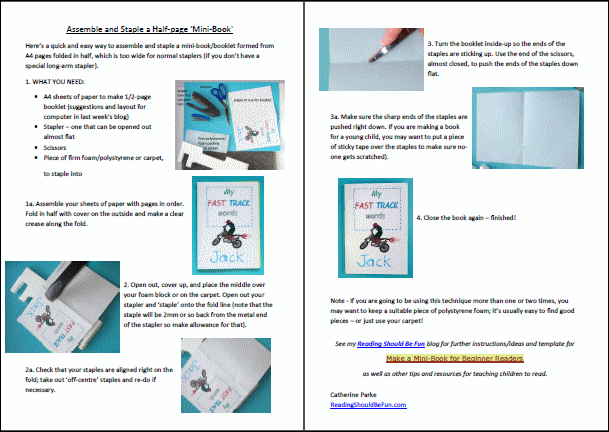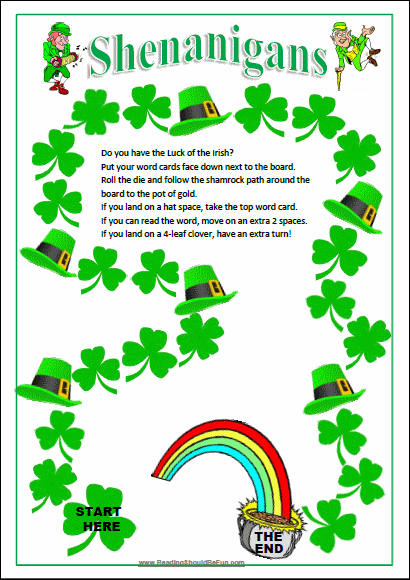Many
of my Reading Intervention students over the years have been boys, and a large
number of them have been very keen on riding BMX or Motocross (‘dirt’) bikes.
As
many of them have difficulty remembering words that they have not seen often or
frequently, they can become discouraged and unmotivated (usually they would
rather be outside riding their bike than practising their reading skills
anyhow).
I
had to come up with an idea to motivate them to practise Sight Words, to give
them experience of success and build their confidence in a way they could
relate to and without taking too much of their valuable relaxation time after
school.
Fast
Track Words was the solution I found; you are welcome to use this if you have a
child who may relate to the idea*.
You
just need to copy off some “Fast Track Words” lists (one- or two-sided ) and to
make a booklet of 4-5 A4 pages (copy the cover onto one page and fold them all
in half to make the book). If you have different coloured paper for the pages,
this can make it more attractive. The child’s name is written on the front, and
he can decorate the cover if he likes.
Here is a cover you can print (instructions for stapling the booklet are in the blog post before this one)
Here is a cover you can print (instructions for stapling the booklet are in the blog post before this one)
 |
| Fast Track Words booklet cover to print |
About
Fast Track Words.
The
idea of “fast track” words is to build up a bank of words that are quick to
recognise – Sight Words.
When
a person reads a word for the first time, it takes longer to process the word,
i.e. to “track” through the brain.
Each
successive practice of the word, if frequent enough, will form stronger neural
pathways so that recognition of the word becomes faster and more automatic.
The
analogy for the child is the idea of riding their bike through a paddock or
field: the first few times are slow as there are stones, long grass, sticks
etc. in the way. Each time they ride along the same way, they wear a track
through the paddock, becoming smoother and better formed, so it becomes easier
and faster. When we begin to learn a word, it takes a while to get through our
brain, to be recognised, and to get out again; each time we practise, it wears
a track through our brain and becomes faster and easier, just like a bike
track!
When
children build up a large enough bank of Sight Words, their reading becomes
faster, easier and more fluent, so it should be more enjoyable.
“Fast
Track Words’ encourages children to build up their Sight Word vocabulary and to
gain recognition for words they already know.
Beginner
readers may start with basic words such as their name, Mum, Dad, cat, zoo etc.,
and gradually build up the collection of words they know well and can read
confidently.
The
idea is to consolidate words they already know or almost know, not to introduce
words that are too challenging (those will need pre-practice).
The
chosen words are written on the Fast Track list (you can start with 6-12 ‘easy’
words on a one-sided list so the child doesn’t feel overwhelmed).
| Fast Track Words list to print |
The
child reads the words each day, and each word read correctly and quickly receives a tick (check).
When
a word has 5 ticks, it can be written in to the Fast Track book. Use coloured
pens or pencils to make the word more memorable.
The
child can illustrate the words in the book or you can add stickers or stamps or
decorate the pages if you like (though most of my students are not interested
in embellishments – they just like the list of words to grow!).
The
book can be looked through from time to time, to revise the ‘known’ words (as
these children may often forget words they don’t see frequently); this also
reinforces the progress of their learning with tangible evidence.
When a book is full, it’s easy to start a new
one. Keep the old ones to later remind them of how far they have progressed!
*These printables are free for your personal/educational use.
Next Week: printable Easter Sight Words board game.
Next Week: printable Easter Sight Words board game.














